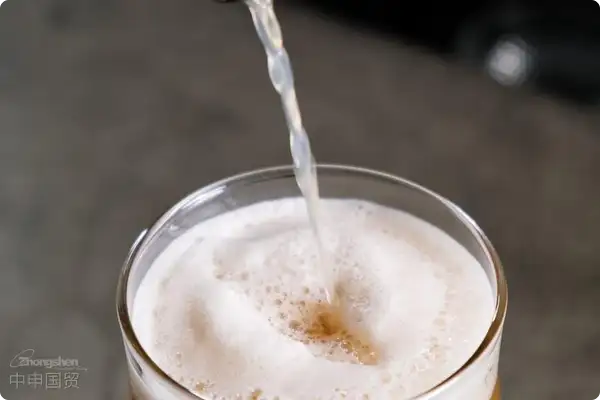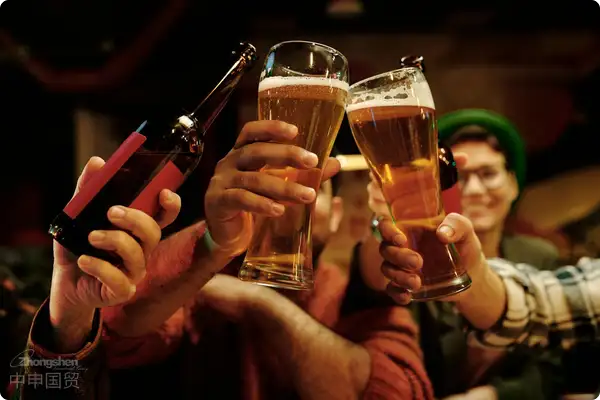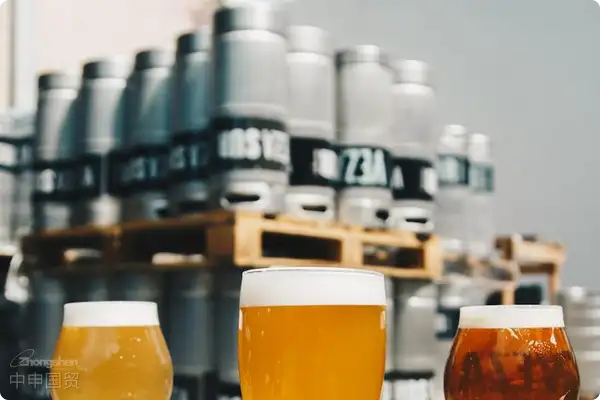- Shanghai Zhongshen International Trade Co., Ltd. - Two decades of trade agency expertise.
- Service Hotline: 139 1787 2118
Natural mineral water not only captivates consumers with its unique taste but has also become an important commodity in international trade. However, faced with strict standards and complex labeling requirements in various countries, how can companies ensure that mineral water products circulate legally and compliantly in international markets? This guide will interpret theimport and exportkey requirements for mineral water, helping you navigate the global market with ease!
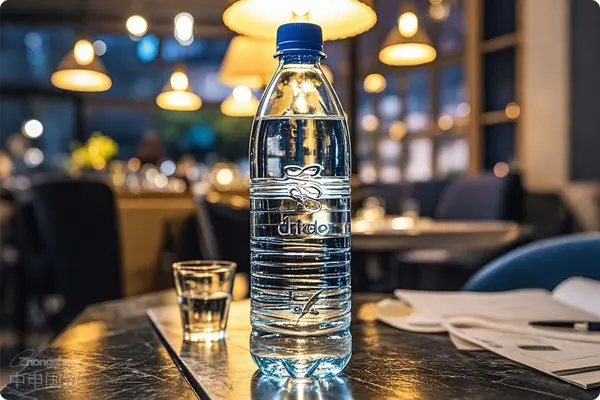
When exporting or importing natural mineral water for drinking, companies must pay attention to product classification, applicable standards, and labeling requirements to ensure compliance with the regulations of the destination country or region. Below is a detailed explanation of each part:
Classification of Natural Mineral Water for Drinking
Natural mineral water for drinking can be classified into sparkling natural mineral water, carbonated natural mineral water, still natural mineral water, and degassed natural mineral water based on differences in carbon dioxide content and source.
1.1 Classification based on carbon dioxide content
- Sparkling natural mineral water:Contains high carbon dioxide content, allowing for recovery and refilling of homologous carbon dioxide. After bottling, it naturally releases carbon dioxide under normal temperature and pressure, producing visible bubbles.
- Carbonated natural mineral water:Bubbles are produced by adding food additive (carbon dioxide), with bubbles resulting from the added carbon dioxide.
- Still natural mineral water:After packaging, the free carbon dioxide content does not exceed the minimum required to maintain bicarbonate dissolution, typically with no visible bubbles.
- Degassed natural mineral water:After collection from the source, carbon dioxide is removed through processing, with no naturally released carbon dioxide under normal temperature and pressure after packaging.
1.2 Classification based on carbon dioxide source
- Sparkling natural mineral water:Carbon dioxide originates from the natural mineral water itself, allowing for recovery and refilling of homologous carbon dioxide during processing.
- Carbonated natural mineral water:Carbon dioxide originates from externally added food-grade carbon dioxide, not from components in natural mineral water.
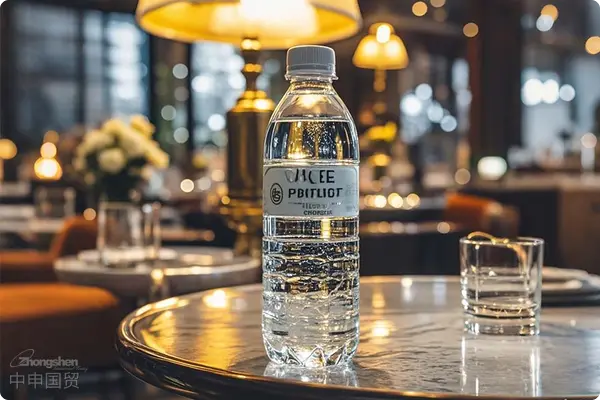
Differences Between Mineral Water and Other Packaged Drinking Water
2.1 Different applicable standards
- Mineral Water: Applicable standard is GB 8537-2018 National Food Safety Standard for Drinking Natural Mineral Water. This standard imposes strict requirements on the mineral composition, microbiological indicators, etc., of mineral water to ensure its naturalness and safety.
- Other Packaged Drinking Water: Applicable standard is GB 19298-2014 National Food Safety Standard for Packaged Drinking Water. This standard applies to all bottled drinking water except mineral water, specifying its physicochemical and microbiological indicators and pollutant limits, but without specific requirements for mineral content.
2.2 Different raw material sources
- Mineral Water: Must originate from uncontaminated natural water sources deep underground, obtained through natural outflow or drilling, preserving its natural minerals and trace elements.
- Other Packaged Drinking Water: Sources are more diverse, including treated water from public water supply systems, surface water, or groundwater.
2.3 Different labeling requirements
- Mineral Water: Must indicate the water source location, boundary indicators, total dissolved solids, and the content range of major cations. When fluoride content exceeds 1.0 mg/L, the label must include the phrase contains fluoride.
- Other Packaged Drinking Water: Not required to meet the labeling requirements for mineral water but must comply with GB 7718-2011 National Food Safety Standard for General Rules for the Labeling of Prepackaged Foods and may be exempt from GB 28050-2011 National Food Safety Standard for Nutrition Labeling of Prepackaged Foods.
National Standards for Natural Mineral Water for Drinking in China
3.1 Limit requirements
- GB 8537-2018 National Food Safety Standard for Drinking Natural Mineral Water: Specifies multiple sensory indicators, limit indicators, pollutant indicators, and microbiological indicators, totaling 39 requirements, including specific limits for selenium (selenium content must be between 0.01 and 0.05 mg/L).
3.2 Other requirements
- Source Approval and Authorization: Natural mineral water sources must be approved and authorized by local authorities, with the approval process including hydrogeological studies to ensure the safety and suitability of the source.
- Production Hygiene and Source Monitoring: Production must comply with GMP requirements (GB 19304 Hygienic Specifications for the Production of Packaged Drinking Water) and undergo strict water quality monitoring, including sensory indicators, mineral content, microbiological indicators, etc.
- Treatment Processes: Allows the use of aeration, filtration, and other methods to remove unstable components but prohibits the use of chemical methods to alter the waters natural properties.
- Packaging Location: Products must be packaged near the water source, and transporting source water to another location for bottling is not permitted.
- Labeling Requirements: Must comply with the general labeling requirements of GB 7718-2011, while also indicating the water source location, product compliance indicators, total dissolved solids, and the content range of major cations.
EU Standards and Indicators for Natural Mineral Water
4.1 Basic provisions of EU standards
- 2009/54/EC Directive: The EUs definition of natural mineral water requires it to be microbiologically safe, sourced from groundwater or reservoirs, and obtained from natural or drilled outlets. The directive mandates that natural mineral water must retain its characteristic mineral composition and purity in its original state.
4.2 Classification
- Naturally Carbonated Natural Mineral Water: Contains original carbon dioxide gas in its natural state.
- Natural Mineral Water Fortified with Spring Gas: During bottling or filling, the same-source carbon dioxide gas is recovered and replenished.
- Carbonated Natural Mineral Water: Bubbles are produced by externally added carbon dioxide.
4.3 EU limit standards
- Microbiological Standards: Include limits for parasites and pathogenic bacteria (e.g., Escherichia coli, fecal streptococci, anaerobic sulfite-reducing clostridia, Pseudomonas aeruginosa, etc.).
- Physicochemical Indicator Limits: 19 physicochemical indicators, including maximum allowable values for minerals, metals, and other chemical components. The EU standards particularly emphasize microbiological safety risks, with 9 specific microbiological indicators.
Suggestions for Import and Export Enterprises
5.1 Comply with the relevant standard limit requirements of the destination country/region
- Import and export enterprises of mineral water must ensure that products comply with the safety standards and limit requirements of the target market. For example, when exporting to the EU, products must meet the provisions of Directive 2009/54/EC, including limits for microbiological, chemical, and mineral content standards.
5.2 Strengthen label management
- Mineral water labels must include three key pieces of information: the water source location, the products boundary indicators and content ranges of main components, and a contains fluoride mark when fluoride content exceeds 1.0 mg/L. Label content must comply with the language and format requirements of the importing country.
5.3 Follow labeling regulations
- Unless otherwise specified, mineral water labels must also comply with GB 7718 National Food Safety Standard - General Rules for Prepackaged Food Labeling and may be exempt from GB 28050 National Food Safety Standard - General Rules for Nutrition Labeling of Prepackaged Foods based on specific circumstances.
Conclusion
Enterprises engaged in mineral water import/export must strictly adhere to relevant domestic and international laws, regulations, and standard requirements to ensure product compliance. Proper labeling not only facilitates smooth customs clearance and inspection but also enhances product competitiveness and consumer trust in international markets.
Related Recommendations
Category case
Contact Us
Email: service@sh-zhongshen.com
Related Recommendations
Contact via WeChat

? 2025. All Rights Reserved. Shanghai ICP No. 2023007705-2  PSB Record: Shanghai No.31011502009912
PSB Record: Shanghai No.31011502009912
